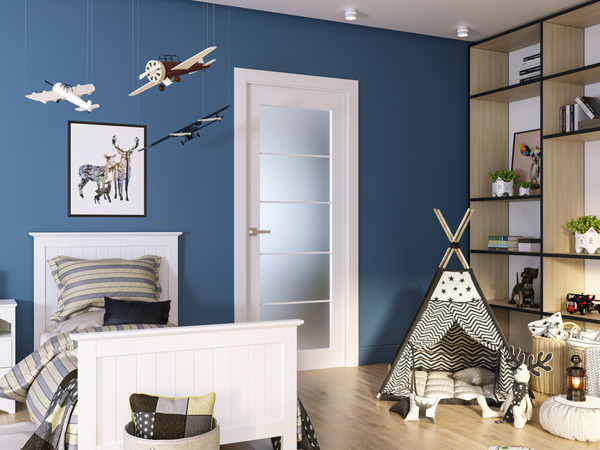
With their unique design and signature glass inserts, French interior doors have long symbolized elegance, luxury, and functionality in home design. One key feature distinguishes these doors: large glass inserts that occupy 80% or more of the door area. This feature allows a flood of natural light into the home and provides the owner with an unobstructed view of the street or surrounding area.
At first glance, the difference between French and conventional doors is the presence of many panes of glass. While traditional doors may have few or no windows, the distinctive feature of French doors is their predominantly glass construction.
In addition, the type of glass, its shade, and accompanying decorative elements can be selected per the owner's design preferences and the house's architectural style.
Why is it called the French Door?
The history of the French door is as intriguing as its design. While the exact origins of the door are somewhat disputed, the name and design principles date back to Renaissance France.
In the 17th century, at the height of the Renaissance, France was experiencing a boom in art, literature, and architecture. Architectural trends emphasizing light, proportion, and geometry moved away from dark, enclosed interiors and toward designs that allowed for more natural light and environmental connection.
Renaissance principles asserted symmetry and the incorporation of nature into architectural designs. It was during this period that the French began to utilize large windows that reached to the floor. Over time, these windows started to function as doors, creating a seamless transition between interior and exterior while maximizing the light entering the room.
This design offered the best views of gardens and landscapes and reflected the Renaissance spirit of enlightenment and clarity. The large panes of glass broke down the barriers between the outside world and the house's interior, both literally and metaphorically.
As these doors grew in popularity, they spread throughout Europe, especially in England. The English started to call them "French windows" or "French doors" to emphasize their origins. The name caught on, and even as the design was adopted and adapted worldwide, the homage to French roots remained.
Types of French Doors
Depending on the amount of available space, your taste, and your budget, the configuration of the French door can be not only the classic, that is, hinged or double-swing.
-
Bi-fold.
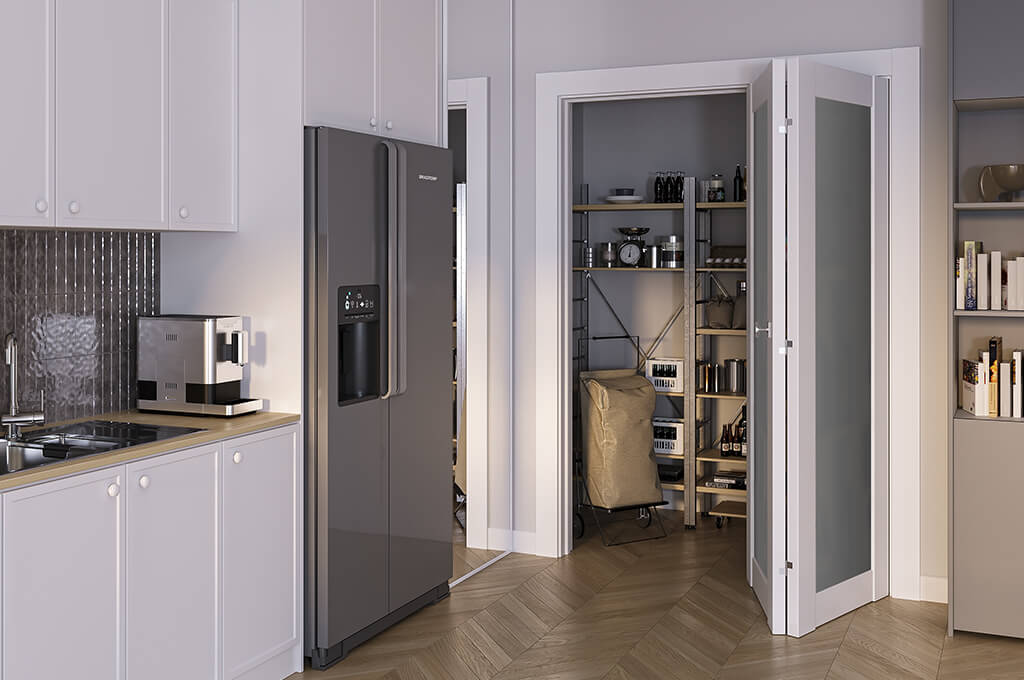
Interior Door Model: Palladio 207 Vetro Bianco Noble Bi-folding doors
An ergonomic and easy-to-use solution that saves space: the door has two slabs that fold up when opened.
-
By-pass.
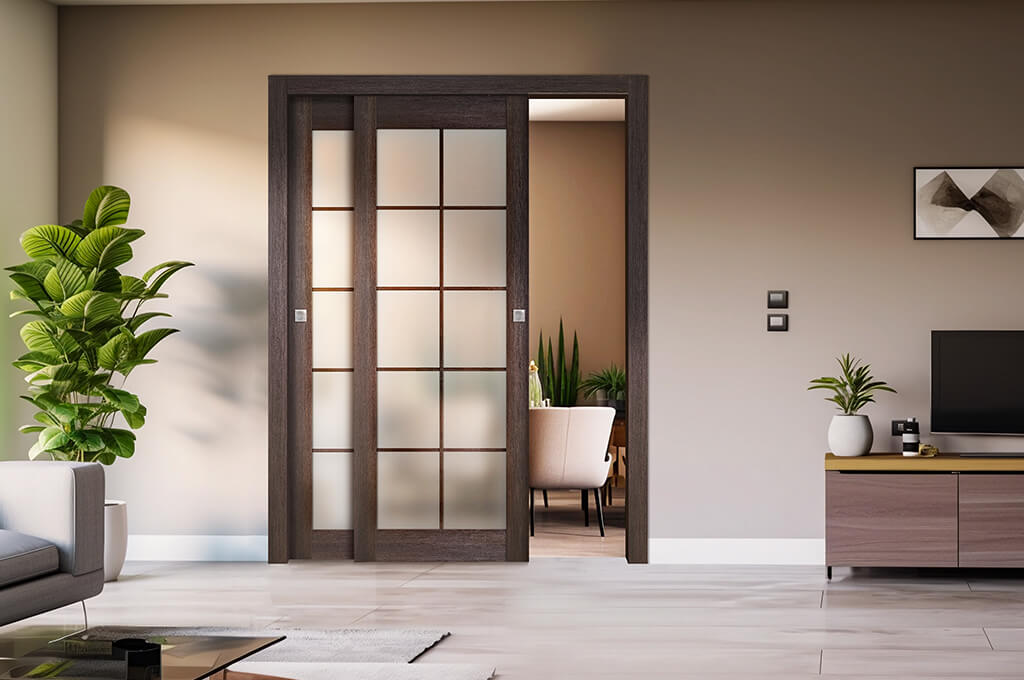
Interior Door Model: Avon 10 Lite Vetro Veralinga Oak Bypass doors
Doors slide past each other, one moving in front or behind the other. This type is space-saving for tighter rooms.
-
Pocket system.
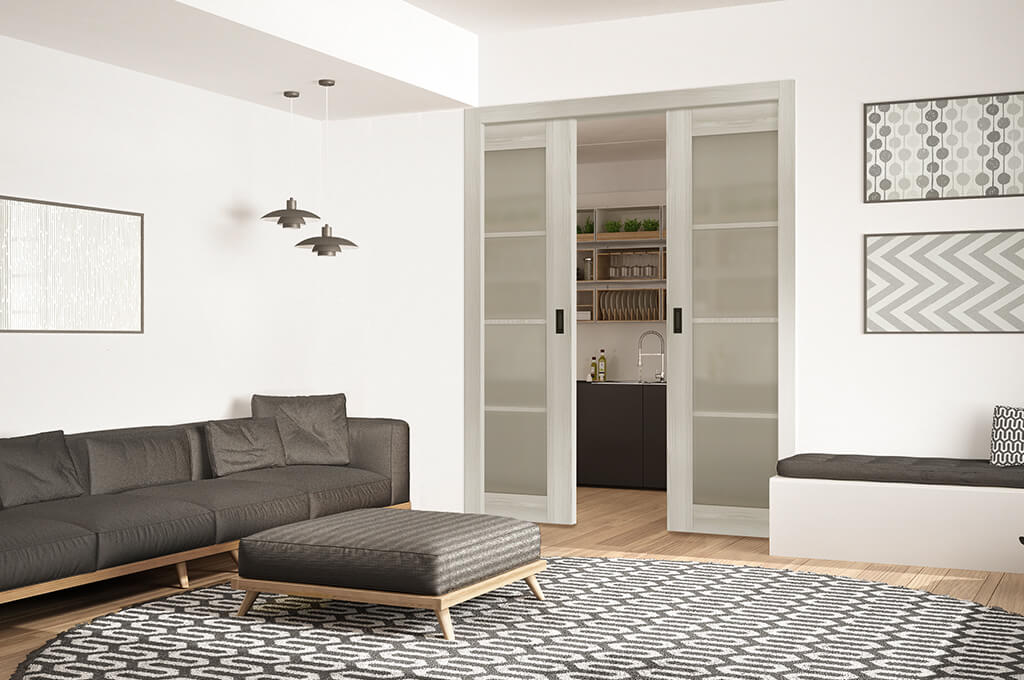
Interior Door Model: Palladio 4 Lite Vetro Bianco Noble Double pocket doors
These doors slide into a compartment in the adjacent wall, thus disappearing from view. Perfect for small rooms or for creating an open-plan feel.
-
Sliding doors (single and double).
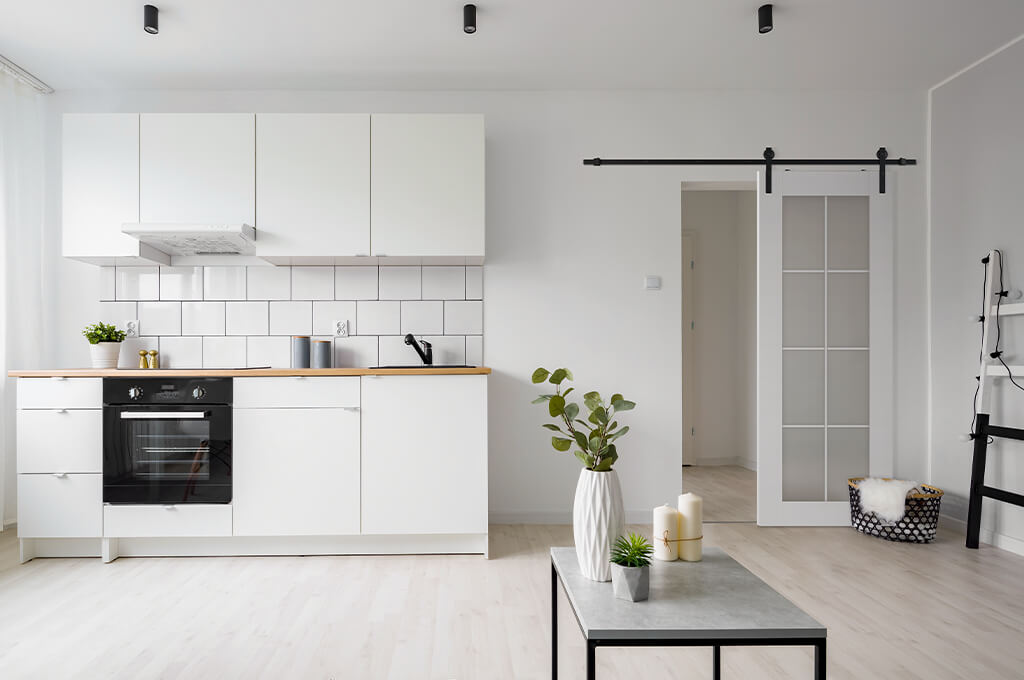
Interior Door Model: Palladio 8 Lite Vetro Bianco Noble Barn doors
Sliding doors are commonly incorporated in most design projects because they offer a unique way to open and efficiently utilize space in an apartment. It is similar to a by-pass system but can have more than two slabs. Slabs slide along wall tracks; the number varies based on construction. Sliding doors visually make the space more comprehensive and are installed without a threshold, so they do not spoil the flooring.
Wood French doors

Interior Door Model: Avon 4 Lite Vetro Pecan Nutwood
Wood, with its natural grains and shades, has an unrivaled aesthetic appeal. When used in French doors, it brings a touch of nature into the home. The variety of wood species, from deep mahogany to light oak, provides homeowners with a choice to match their interior décor and personal style. Intricate carvings, additional panels, and the type of glass used can further emphasize the design.
Advantages of wooden French doors:
-
Durability: Quality wood, when properly treated, can stand the test of time by resisting wear and tear, deterioration, and environmental factors.
-
Insulation: Wood acts as a natural insulator, providing warmth in winter and coolness in summer.
-
Versatility: Wooden French doors can be used in interior and exterior applications such as entry doors, patio doors, or room dividers.
While wooden French doors offer many benefits, there are factors to consider, such as maintenance. Wood requires periodic sealing or painting to prevent warping and protect against pests. In addition, the cost can vary greatly depending on the type of wood chosen and the craftsmanship.
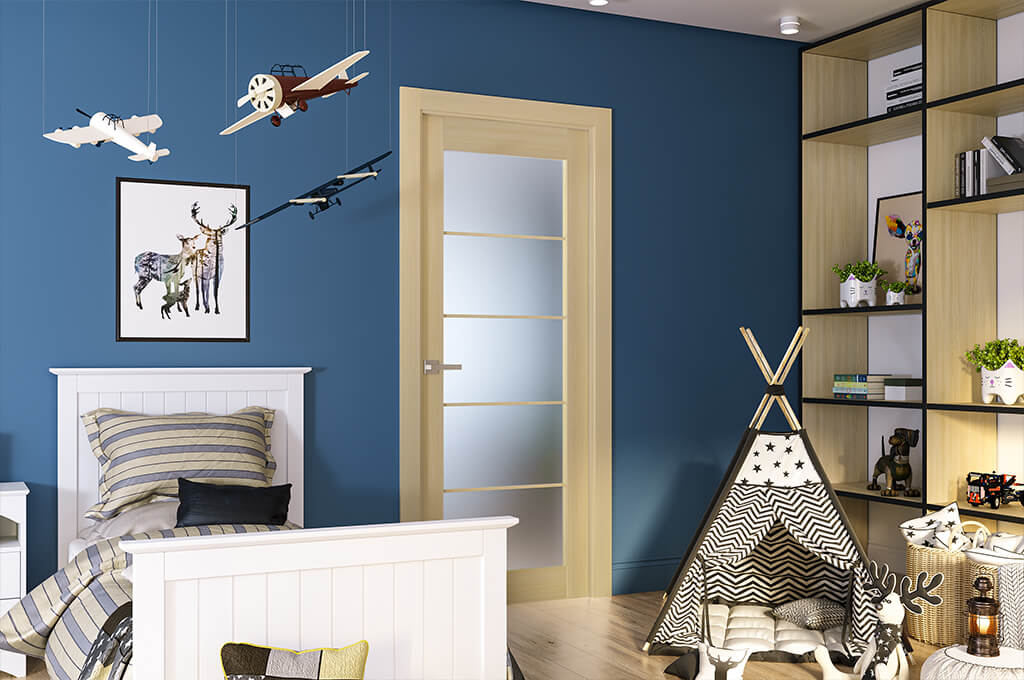
Interior Door Model: Avon 5 Lite Vetro Loire Ash
In recent years, advances have been made in the treatment and manufacturing of wood French doors. These doors meet today's demands, from rot-resistant wood species to UV-protected glass. New hardware options also provide increased security without sacrificing aesthetics.
Wooden French doors seamlessly combine the charm of yesteryear with modern functional needs. They are a testament to the beauty of combining nature and human craftsmanship. Their aesthetic appeal, combined with the warmth and durability of wood, makes them a valuable addition to any home, promising both style and substance. Whether you are remodeling a period home or building a modern space, wooden French doors are a choice that reflects timeless beauty.
Suitable rooms for French doors
Due to their design, French doors are perfect for:
-
Living rooms: They transition indoors and outdoors, especially if they lead to a garden or patio.
-
Bedrooms: for balconies or private terraces.
-
Dining areas: connect to outdoor dining areas or barbecue areas.
-
Study or home office: to separate workspaces while maintaining visual connection.
Hardware for French doors
The hardware for French doors must be both functional and aesthetically pleasing. It is common to choose handles, often paired with a mortise lock for ease of use. When selecting the finish of the hardware, it must match the style of the room: brass, bronze, chrome, or matte black are all popular choices.
Exterior French doors
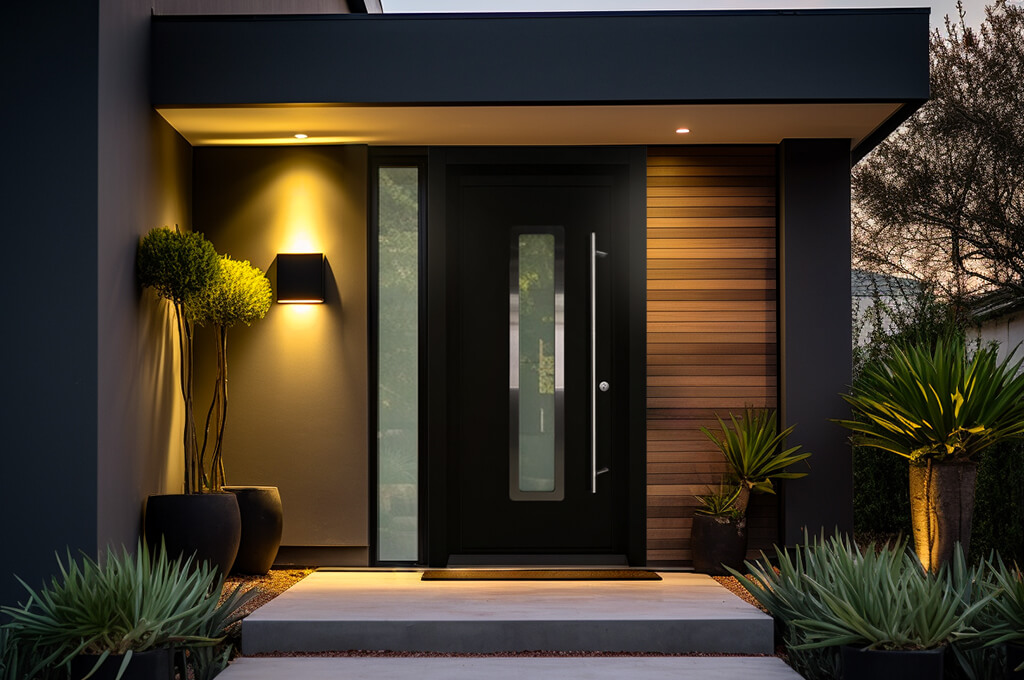
Door Model: Modern Front Steel Door Argos Black/White 49 1/4" x 81 11/16" lhi + sidelite left
French doors are not limited to interiors. French entry doors have become a popular choice for many homes because of:
-
Aesthetics: They create a grand and inviting entrance.
-
Natural light: They illuminate hallways, reducing the need for artificial lighting.
-
Views from the window: frosted glass windows allow homeowners to enjoy exterior views while maintaining privacy.
Advantages:
-
Energy efficiency: Modern French doors often feature double or triple glazing to reduce energy costs.
-
Safety: Despite the heavy construction, the glass is usually tempered, so breaking isn't easy.
-
Increase property value: Due to their attractiveness, they can increase the overall value of a property.
Conclusion
French doors are an exquisite blend of functionality and aesthetics. Their timeless design has made them a favorite in homes worldwide as they flood living spaces with natural light. Whether used in classic architecture or to add elegance to a modern interior, French doors prove that specific designs always stay in style, no matter how old. Their ability to enhance the visual appeal of rooms while providing practical benefits ensures that they will continue to be a sought-after choice for homeowners and designers alike for years to come.

